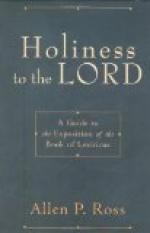We have already seen that a double engine, made up of the gastrocnemius and soleus, is the power which is applied to the heel when we walk, and that the pad of the foot, lying across the sole in line with the ball of the great toe, serves as a fulcrum or rest. The weight of the body falls on the foot between the fulcrum in front and the power behind, as in a lever of the second order. We have explained why the power of the muscles of the calf is increased the more the weight of the body is shifted towards the toes, but it is also evident that the speed and the extent to which the body is lifted are diminished. If, however, the weight be shifted more towards the heel, the muscles of the calf, although losing in power, can lift their load more quickly and to a greater extent.
We must look closely at the foot lever if we are to understand it. It is arched or bent; the front pillar of the arch stretches from the summit or keystone, where the weight of the body is poised, to the pad of the foot or fulcrum (Fig. 6); the posterior pillar, projecting as the heel, extends from the summit to the point at which the muscular power is applied. A foot with a short anterior pillar and a long posterior pillar or heel is one designed for power, not speed. It is one which will serve a hill-climber well or a heavy, corpulent man. The opposite kind, one with a short heel and a long pillar in front, is well adapted for running and sprinting—for speed. Now, we do find among the various races of mankind that some have been given long heels, such as the dark-skinned natives of Africa and of Australia, while other races have been given relatively short, stumpy heels, of which sort the natives of Europe and of China may be cited as examples. With long heels less powerful muscular engines are required, and hence in dark races the calf of the leg is but ill developed, because the muscles which move the heel are small. We must admit, however, that the gait of dark-skinned races is usually easy and graceful. We Europeans, on the other hand, having short heels, need more powerful muscles to move them, and hence our calves are usually well developed, but our gait is apt to be jerky.
[Illustration: Fig. 6.—The bones forming the arch of the foot, seen from the inner side.]




